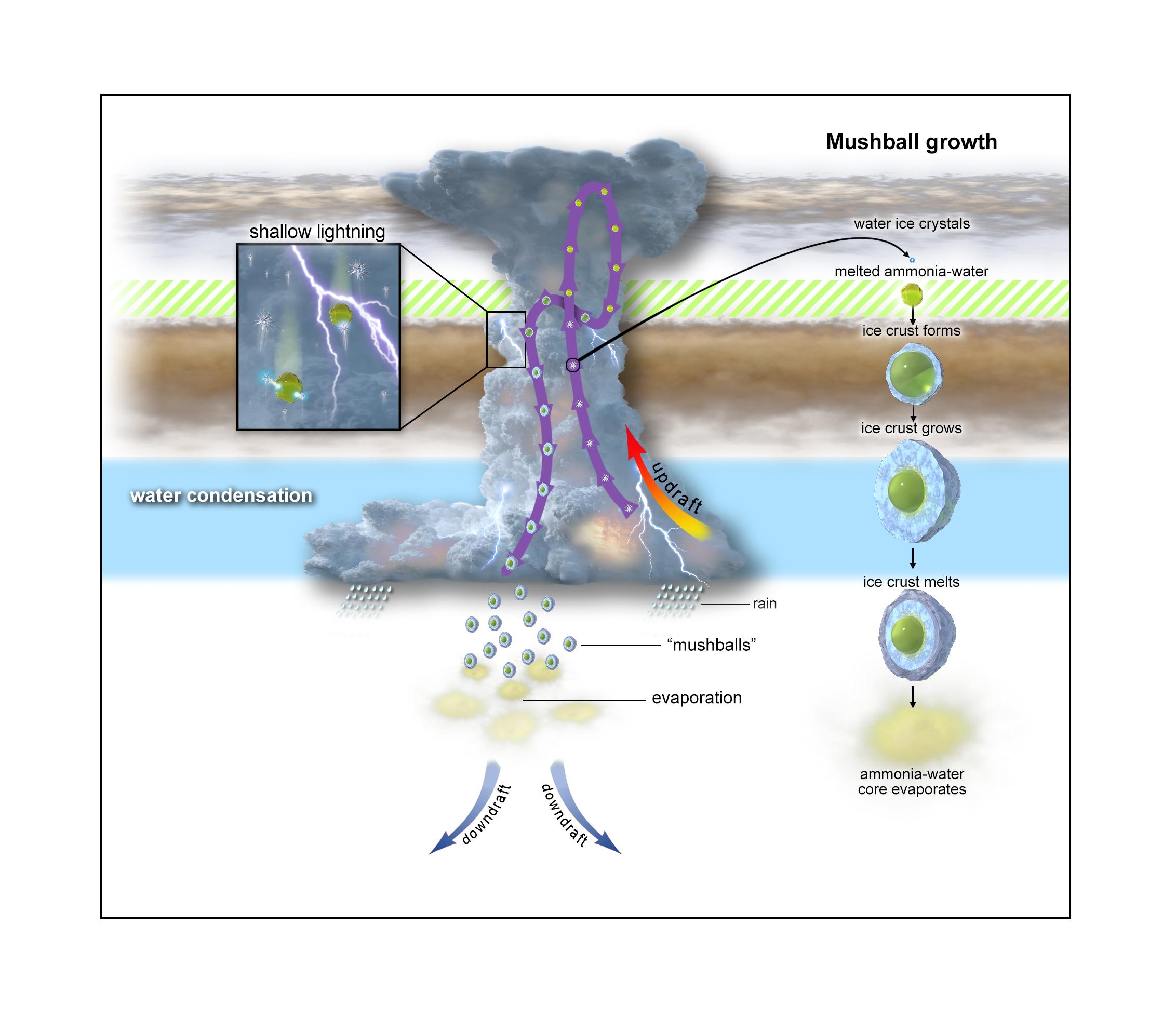
|
A Mushball and Shallow-Lightning Factory (Illustration)
- Click the image above for a larger view
- Full-Res JPEG (2264 x 1962) (254.8 kB)
- Full-Res TIFF (2264 x 1962) (4.0 MB)
Caption:
This graphic depicts the evolutionary process of "shallow lightning" and ammonia-water hailstones called "mushballs." An anvil-shaped thunderstorm cloud originates about 40 miles (65 kilometers) below Jupiter's visible cloud deck. Powered by water-based moist convection, the cloud generates strong updrafts that move liquid water and water ice particles upward. About 12 miles (19 kilometers) up, temperatures are so low that all of the water particles turn to ice. Still climbing, the ice particles cross a region located about 14 miles (23 kilometers) below the upper clouds, where temperatures are between minus 121 degrees Fahrenheit (minus 85 degrees Celsius) and minus 150 degrees Fahrenheit (minus 100 degrees Celsius), (depicted as green-hashed layer). At that point, ammonia vapor in the atmosphere acts like an antifreeze, melting the water-ice crystals, transforming them into ammonia-water liquid droplets which then grow and gather a solid icy shell to become mushballs. Once big enough, these slushy hailstones fall down, transporting both ammonia and water into Jupiter's deep atmosphere where the mushballs eventually evaporate.
Background Info:
More information about Juno is at http://www.nasa.gov/juno and http://missionjuno.swri.edu .
Cataloging Keywords:
| Name | Value | Additional Values |
|---|---|---|
| Target | Jupiter | |
| System | Jupiter | |
| Target Type | Planet | |
| Mission | Juno | |
| Instrument Host | Juno | |
| Host Type | Orbiter | |
| Instrument | ||
| Detector | ||
| Extra Keywords | Ammonia, Atmosphere, Color, Storm, Water | |
| Acquisition Date | ||
| Release Date | 2020-08-05 | |
| Date in Caption | ||
| Image Credit | NASA/JPL-Caltech/SwRI/CNRS | |
| Source | photojournal.jpl.nasa.gov/catalog/PIA24042 | |
| Identifier | PIA24042 | |
